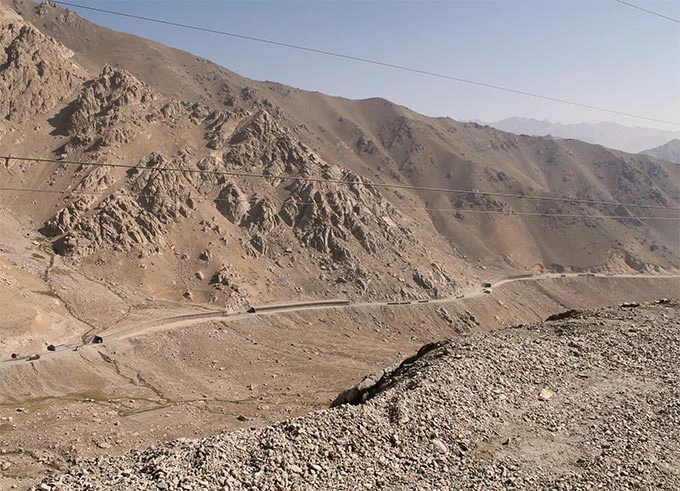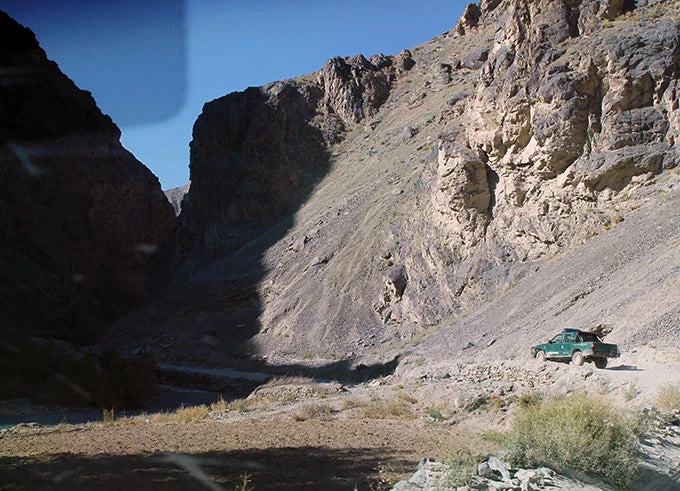
The Afghan Government takes full ownership of a new project to rehabilitate the Salang Pass Highway
If you had travelled along the silk route to Afghanistan over a hundred years ago, your caravan would have encountered some formidable mountain terrain. Crossing the treacherous icy passes was one of the greatest dangers, and could only be undertaken during the summer months.
Things did not change much until the 1960s. That was when the Soviets built the sturdy two-lane Salang highway across the Hindukush mountains and bored a 2.8 km long tunnel at the Salang Pass at 3,400 meters above sea level. The Salang tunnel - the world’s highest road tunnel at that time - was a feat of engineering.
Even today, the Salang tunnel and highway is the lifeline of the country. It links the northern towns of Kunduz and Mazar-e-Sharif with the plains of Kabul and beyond, sparing travelers an exhausting and often dangerous journey and bringing much-needed supplies into Kabul from the lands to the north and the east. This is evident until today when avalanches and icy winter weather block the road and seal up the tunnel for days or even weeks, Kabul literally pays the price in terms of soaring prices for food and fuel.
Although the road has held up well for a long time because of the quality of its original construction, its critical importance for the country makes it quite impossible to close it for even short periods to carry out repairs.
In such a scenario, with some 4,500 to 9,000 vehicles – mostly trucks - plying along the road each day, ‘quick fix’ repairs are all that can be done to avoid serious road disruptions. However, these repairs are never really long-lasting enough to make up for the extensive damage caused by extreme weather conditions and the never-ending line of overloaded trucks that wreak the tarmac with snow chains in winter.
Given the ever-growing traffic volumes and the critical importance of the Salang Pass road to ensure connectivity both within Afghanistan and beyond, the Afghan government has been looking for funds to build a second tunnel at the Salang Pass. Until such time when the large-scale funding for a project of this magnitude can be secured, the Government has requested the World Bank to help repair and rehabilitate the existing Salang highway and tunnel, and also upgrade the alternative route across the mountains - the Baghlan to Bamiyan road which can be used when the Salang pass is temporarily closed for repairs or any other reason. The Government also wants the Bank to help implement solid arrangements for managing and maintaining the two roads so that road users can always count on good road conditions, year after year. The project is now under preparation.

What has impressed me most is the confidence with which the Afghan government is taking on a project of this complexity. They – especially the civil servants in the Ministry of Public Works (MPW) – are now in the driver’s seat, taking full ownership. Over the past decade or more, they have acquired considerable capacity by working with us and other donors in implementing such projects. This is a far cry from the early 2000s when they relied entirely on the United Nations Office for Project Services (UNOPS) to implement rural roads projects with the help of teams of international consultants. Now, domestic consultants hired by MPW are going to deal with most of the technical and safeguard issues, as well as procurement and a part of the project’s financial management responsibilities.
An important ingredient is the strong political will shown by the Afghan leadership. This is demonstrated by the constitution of the Inter-ministerial Leadership Committee - chaired by the President’s Special Representative and co-chaired by the Minister of Public Works - to coordinate the efforts of various ministries in project implementation, including the Ministries of Finance; Agriculture, Irrigation and Livestock; Interior; Defense; and Rural Reconstruction and Development.
The rehabilitation of the Salang Pass road and the upgrading of the Baghlan to Bamiyan road are eagerly awaited by the local people. This is clear from the stream of village elders from the local ‘Shuras’ – or village councils - who regularly visit the Ministry to find out when the work is going to begin. The buy-in of local communities is especially critical since the Baghlan to Bamiyan road will run through insecure areas including those controlled by anti-government elements.
It is hoped that the successful implementation of the project will help restore the Afghan population’s trust in the Government’s capacity to provide essential services, and thereby help restore peace and stability in the country.


Join the Conversation